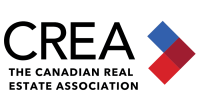
Why Now Is the Time for Doctors to Cash Out of Their Buildings
Once considered a subsegment of office properties, medical office buildings have come into their own over the past decade.
While the pandemic has left many owners with large vacancies to fill, medical office buildings, or MOBs, as they are often referred to, are experiencing vacancies of less than 5 percent in some markets. Strong absorption and low deliveries, combined with an increase in average rental rates, are keeping investors, particularly medical office real estate investment trusts (REITs), hungry for more.
Despite forecasts of a possible recession, the Federal Reserve’s pause of programmatic rate hikes and discussion of rate cuts as early as this summer suggest otherwise. Now could be a great time to dust off your physician client’s building valuation to strategize on a sale. With the average age of providers nearing 54, a sale and leaseback transaction could be the solution they seek.
What exactly is a sale and leaseback, and who might be a good candidate?
A sale and leaseback real estate transaction is a simultaneous real estate sale and lease, whereby an owner-occupier (particularly a physician group or hospital system) chooses to sell their real estate to a third party while executing a longterm lease. This structure enables their practice to continue operating uninterrupted while allowing the partnership to cash out of their real estate investment at a premium value.
To execute this strategy, a client will need to control the decision-making for both the medical practice, as well as the real estate. Typically, the client will have separate ownership entities for these assets. In the case of an extensive practice with several physician owners, you may be dealing with more than one decision-maker or the group as a whole.
Timing considerations for a sale and leaseback strategy
Most physician owners would likely tell you that they are so focused on running their practice that their real estate ownership does not often get the attention it deserves. We often hear that it is “too early” to think about selling their real estate. However, with the average age of physicians at 53.9 years and typical lease terms running between 10 and 15 years, now could be the best possible time to consider a sale and leaseback as a real estate exit strategy.
If a client waits too long, past the point of being able to execute a long-term lease, it could cost them hundreds of thousands, if not millions, of dollars in value. Practically speaking, a lease with three to five years of cash flow has substantially less value (a greater inherent risk to the buyer) than one with 10 to 15 years. Educating your client that it is important to start thinking about how a sale could fit into their retirement strategy, sooner rather than later, will benefit them in the long run.
Practice sales and lease structuring
With the financial markets beginning to rebound from recent interest rate hikes, we have already begun to see a more robust year of investing. Not only does this trend apply to real estate but also to private equity-backed Management Service Organizations (MSOs) seeking to acquire and pool together independent physician practices.
Independent specialty providers in ophthalmology, gastroenterology, orthopedics, dermatology, and plastic surgery are all candidates for consolidation. The consideration of remaining independent or joining a broader network (such as a hospital, private equity, or larger regional practice) remains a hot topic at many physician conferences, making it clear that succession planning is on most physicians’ minds.
While your client’s decision to sell their practice may be up for debate, their building lease should not be. It stands to reason that the value of most practice sales eclipses the value of the physician’s building. That said, real property still carries millions of dollars in value, which can be jeopardized if a practice (the tenant or occupier) is sold without a new lease being structured to secure the real estate.
A practice sale transforms a physician owner-occupier into a physician landlord. As real estate professionals, we all know that a good lease can make or break the value of a building. Navigating a lease negotiation during a practice sale can be tricky, but as a fiduciary to our clients, it is important that we help them structure a lease that preserves the value and salability of their building.
If the client fails to seek guidance or does so too late in a practice sale process, there can be real consequences. In our experience, physician owner-occupiers have one opportunity to structure a proper lease with their new tenant. Once the practice sale closes, your client likely has little leverage to renegotiate with their tenant, the new owner of the practice.
After all, they are no longer making business decisions on behalf of the practice, which includes lease-related matters. The lesson is to educate your clients early and often, keeping their real estate investment top of mind when considering a sale of their practice to the hospital, private equity, or a larger regional practice.
Sale and leasebacks have other benefits, too
With the intent to control their destiny, many physicians purchase vacant buildings, which they adapt to the needs of their practice and patients. Just like they knew when to buy a building, they must also consider the optimal time to exit. A sale and leaseback strategy provides physicians with a method of truly maximizing the value of their real estate investment at a strategic time. However, there are additional advantages that provide real value, including creating liquidity for expansion and debt reduction, along with eliminating personal guarantees and mitigating the risk of building obsolescence.
When a physician (or group) acquires a building, they generally use debt in the form of a mortgage or line of credit, which are typically personally guaranteed. Upon a building sale, any debt is cleared, as are the associated personal guarantees tied to that loan. So, while the practice can continue to conduct business in a building that they once owned, they have no personal guarantees tied to the building or lease.
A further benefit is that if a capital expense arises, perhaps a roof replacement, the cost can often be transferred over to the new landlord, further reducing the physician’s (now the tenant’s) risk. Now that your client has sold their building, paid off their loan, and removed their personal liability, they have endless options for use of the proceeds; their equity is unlocked.
Conclusion
The benefits of a sale and leaseback extend further than the points I have touched on in this brief article. Still, the common theme with each such strategy is that owner-occupiers must be educated that succession planning for their real estate should start very early in their ownership. In our profession, there is a saying that “you make your money on the buy,” but that assumes a properly planned exit strategy. While your physician or healthcare clients might not be interested today, eventually, they will want or need to sell. Our job is to educate them on the how and why, remaining respectfully persistent in order to help them maintain awareness of their real estate options.
____________
Michael Campbell, CCIM, is Managing Director of ERE Healthcare Real Estate Advisors in San Diego, CA. Campbell specializes in providing executive-level advisory to developers and physician-owners of healthcare real estate.






